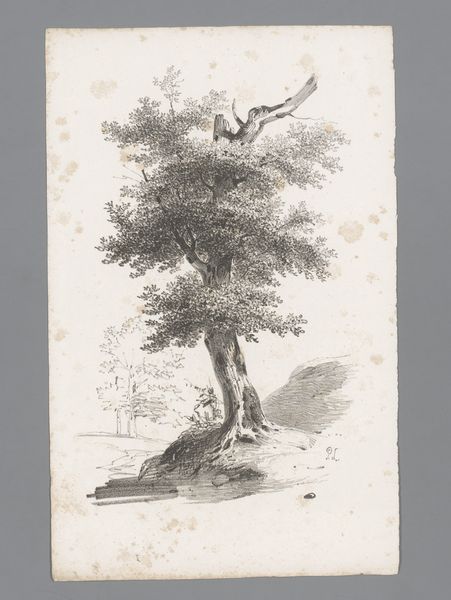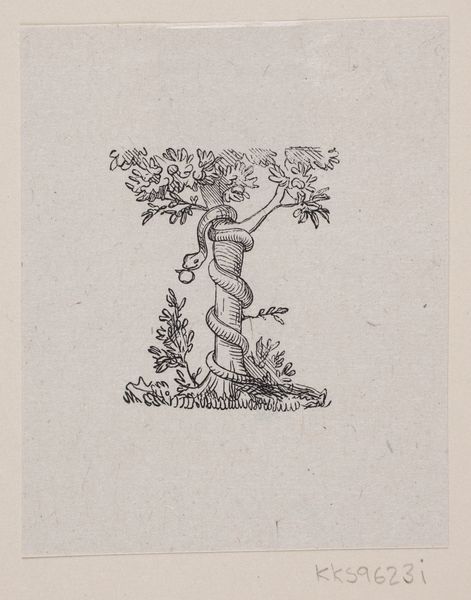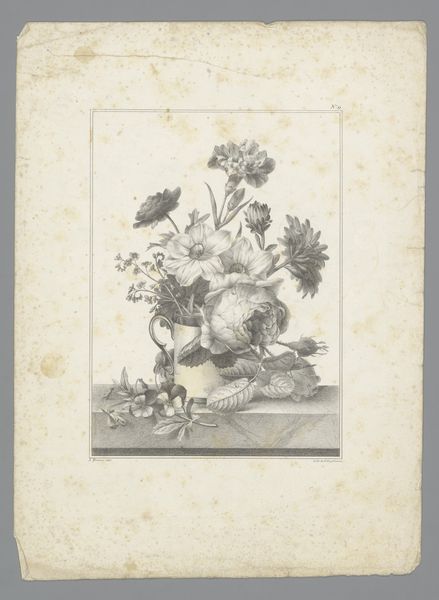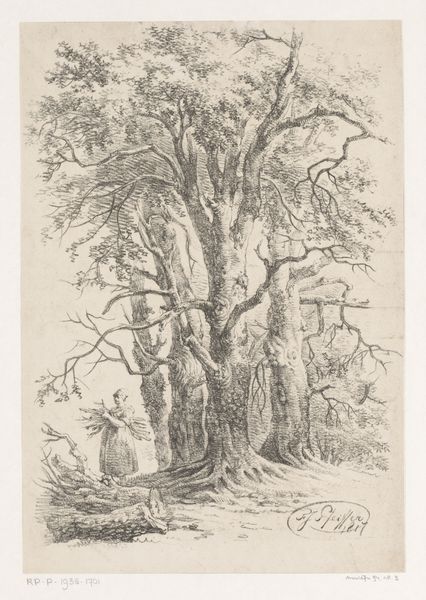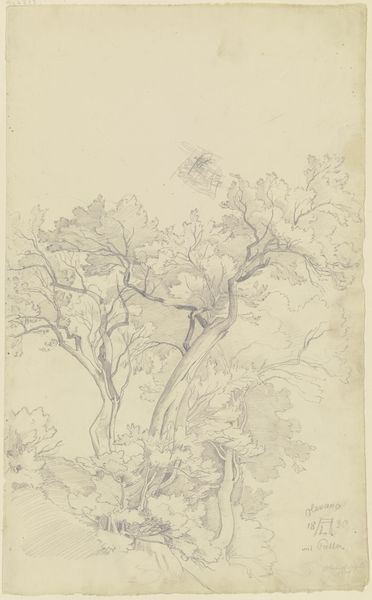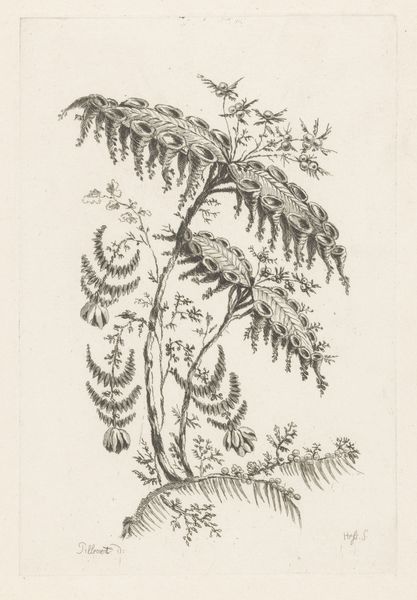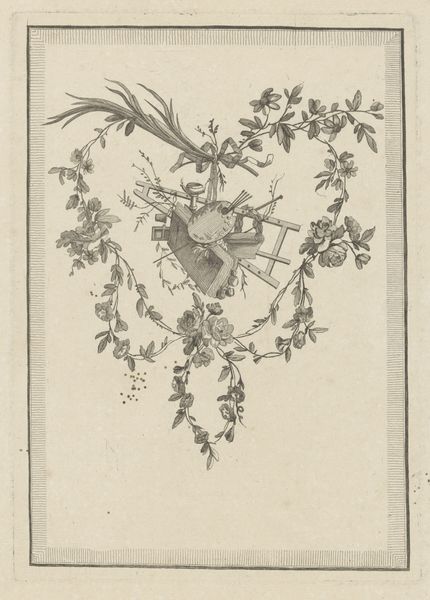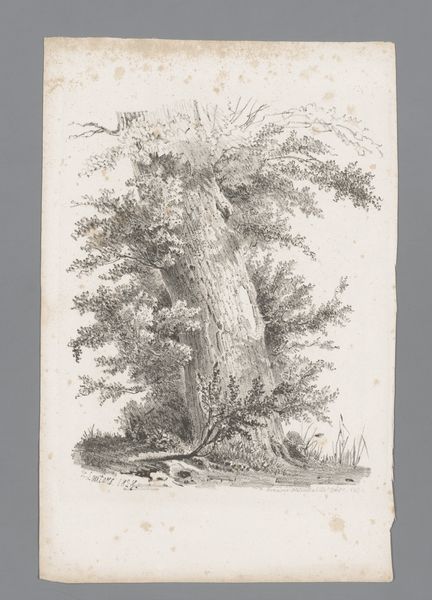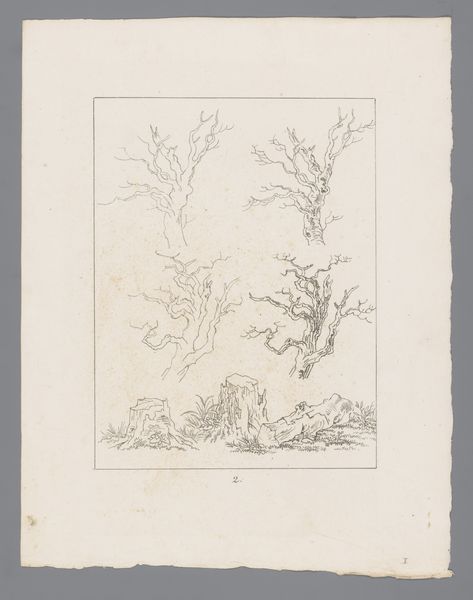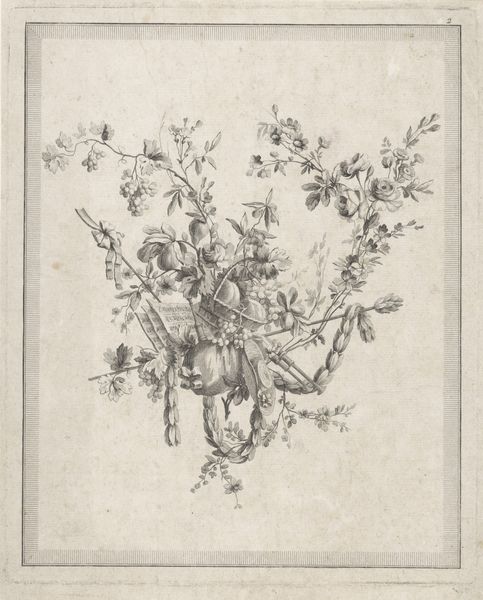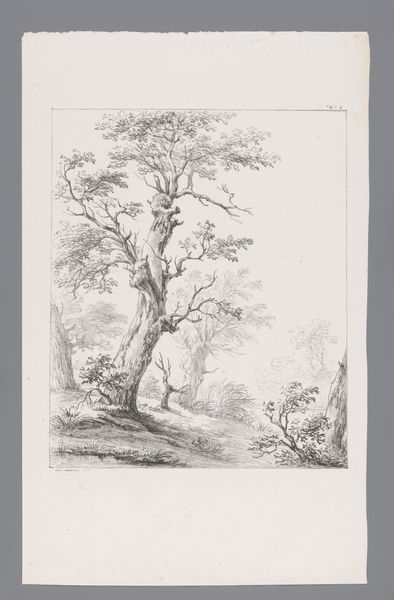
print, etching
#
baroque
# print
#
etching
#
etching
#
line
Dimensions: height 133 mm, width 84 mm
Copyright: Rijks Museum: Open Domain
Curator: Ah, yes, "Druivelaar" by Claude Mellan, created in 1677. It resides here at the Rijksmuseum. Editor: My first impression? Spare. Minimalist, even. The detail in the grapes themselves is nice, but it feels…unfinished? Curator: Well, remember that this is an etching. We should appreciate the means of its production. The precise lines required of the printmaker to describe the texture and form using only etching. Editor: Etching as a technique involves a very specific and class-oriented labor, and yes, that is important here, I suppose. Curator: Exactly. And in relation to whom it was created, we must analyze what a seemingly innocent vine represents in the broader historical context. One could argue that this symbol, like so much nature portrayed in art, reflects power structures rooted in colonial exploitation of labor. Editor: I hadn't considered that. Still, is this supposed to represent some sort of status for owning a grapevine at the time? Were these materials rare to acquire or hard to cultivate? Curator: Not necessarily rare. The presence of a vineyard can still signal prosperity. Think about what vineyards mean to regions where women are often excluded from decision-making around production and selling of the crop. Editor: I can't say that had crossed my mind. To come back to the technique for a moment, though. Are the lines all in the same direction? Curator: No, the lines create a play of shadow. Editor: The density and directionality seem important, indeed, guiding your eyes. It looks technically brilliant. What an interesting contrast. On the surface, it presents an image of quaintness, but looking closer, it gives us room to reframe our view of that quaintness as a form of soft oppression. Curator: Precisely! And with those shifting contexts, we invite ourselves to question how art has functioned to represent our position and status in society through something seemingly neutral as a simple image of grapes on a vine. Editor: Very well, let us take leave on that note, perhaps inviting audiences to engage with images they find normal or beautiful through a sharper focus on both process and product in connection with their societal narratives.
Comments
No comments
Be the first to comment and join the conversation on the ultimate creative platform.
